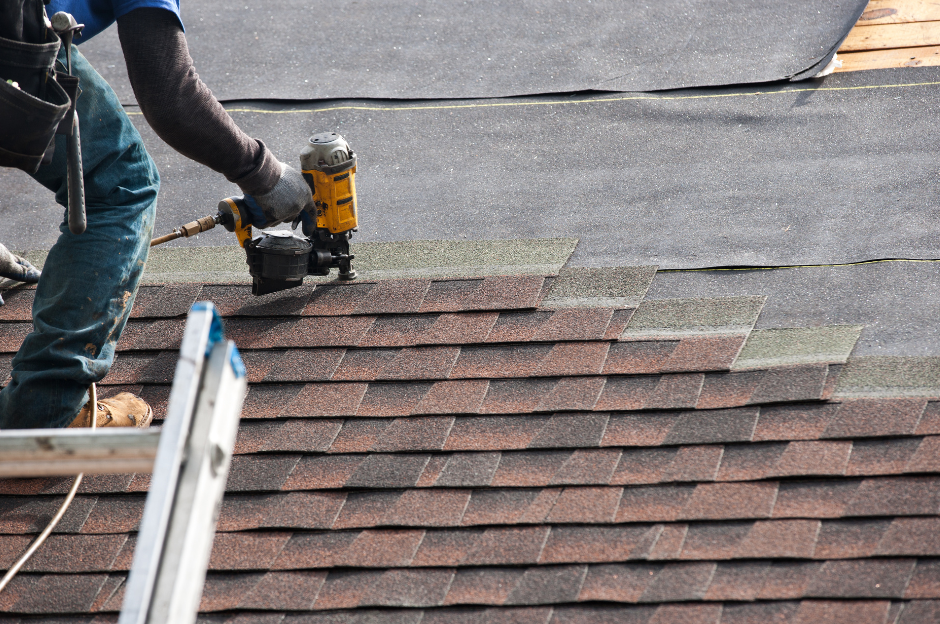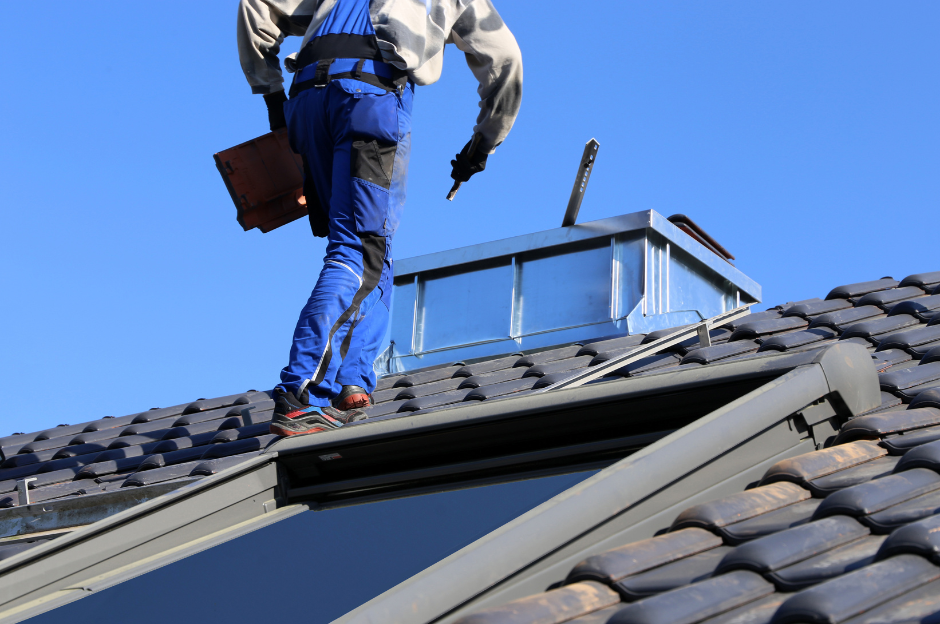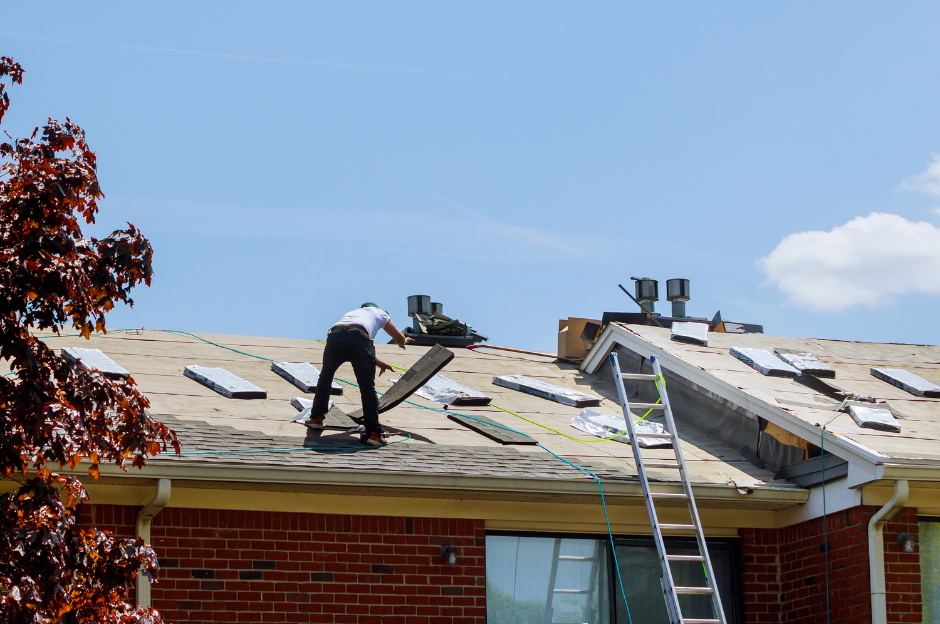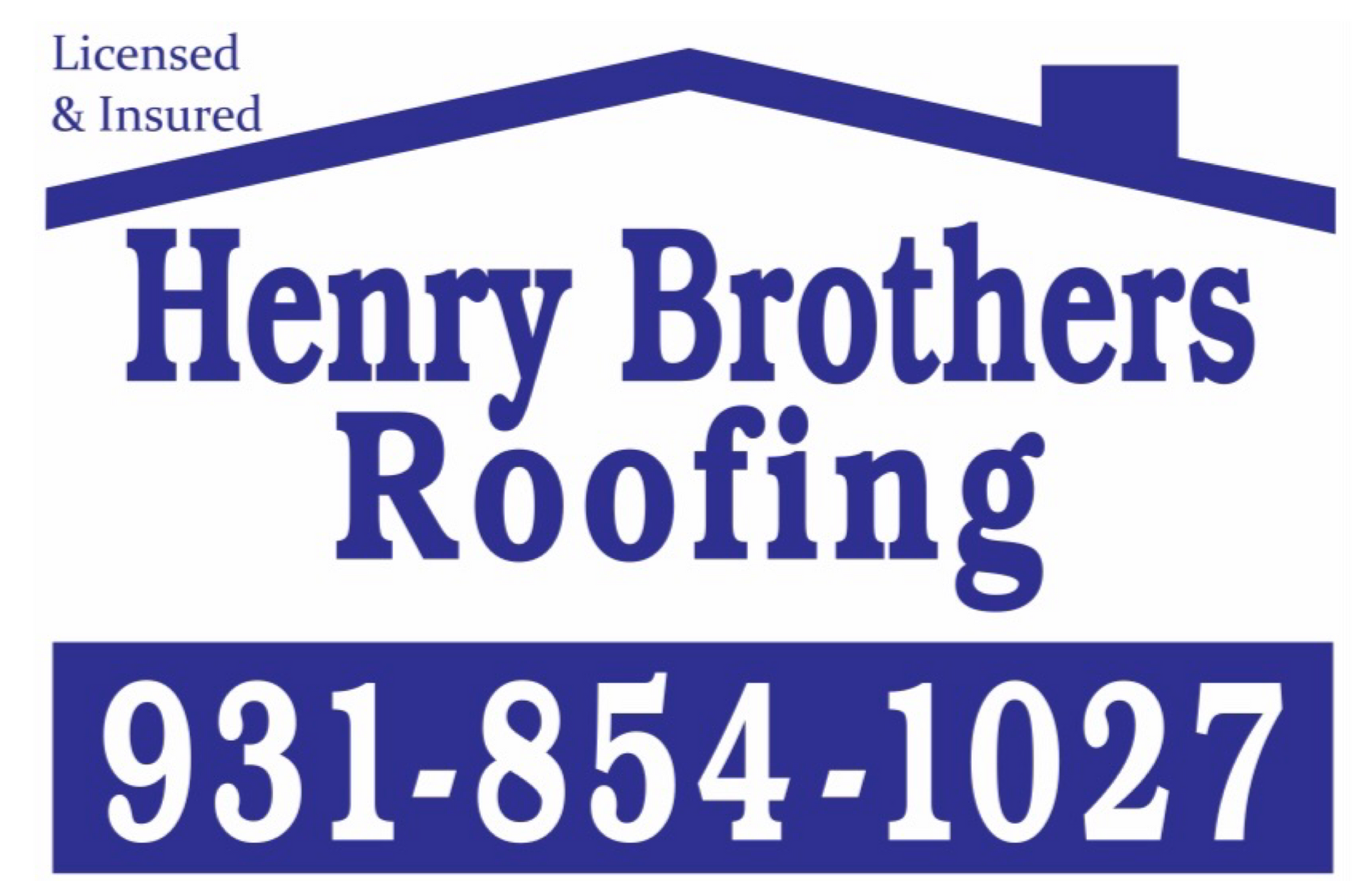Emergency Roofing Solutions: Navigating Through Disaster with Confidence
May 3, 2024

Your roof is your home's first line of defense against the elements, providing protection and shelter for you and your loved ones. However, when disaster strikes and your roof sustains damage, knowing what steps to take can make all the difference in minimizing further damage and ensuring the safety and integrity of your home. In this comprehensive guide, we'll explore emergency roofing solutions, offering practical tips and advice to help you navigate through roofing disasters with confidence and peace of mind.
Assessing the Situation
The first step in addressing a roofing emergency is to assess the extent of the damage. Depending on the severity of the damage and the cause (such as storm damage, leaks, or structural issues), your response may vary. Here's what to look for:
Visible Signs of Damage: Inspect your roof for visible signs of damage, such as missing or damaged shingles, sagging areas, or water stains on the ceiling. These signs can indicate areas of concern that require immediate attention.
Interior Damage: Check your attic or ceiling for signs of water intrusion, such as dampness, water stains, or mold growth. Interior damage can indicate a roof leak or other issues that need to be addressed promptly.
Safety Hazards: Assess the safety hazards associated with the damaged roof, such as loose debris, unstable roofing materials, or exposed electrical wires. Ensure that you take necessary precautions to protect yourself and others from potential hazards.
Temporary Repairs
In some cases, temporary repairs may be necessary to prevent further damage and protect your home until permanent repairs can be made. Here are some temporary roofing solutions you can consider:
Tarping: Use tarps or plastic sheeting to cover damaged areas of the roof and prevent water intrusion. Secure the tarps with nails or weights to ensure they stay in place during windy conditions.
Temporary Patching: Apply roofing cement or sealant to temporarily patch small holes or cracks in the roof. This can help prevent water from leaking into your home until permanent repairs can be made.
Clearing Debris: Remove any debris or fallen branches from the roof to prevent further damage and ensure proper drainage. Use caution when accessing the roof, and consider hiring a professional if the damage is extensive or unsafe to handle on your own.
Contacting Roofing Professionals
While temporary repairs can provide immediate relief, it's essential to contact roofing professionals as soon as possible to assess the damage and determine the best course of action for permanent repairs. Here's what to consider when hiring roofing professionals:
Licensed and Insured: Choose roofing contractors who are licensed, bonded, and insured to ensure they have the necessary expertise and protection to handle your roofing project safely and effectively.
Experience and Reputation: Look for roofing professionals with a proven track record of experience and a solid reputation in the industry. Check online reviews, ask for references, and research the company's credentials before making a hiring decision.
Emergency Services: Choose roofing contractors who offer emergency services and can respond quickly to your roofing needs, especially in urgent situations such as storm damage or severe leaks.
Written Estimates: Obtain written estimates from multiple roofing contractors and compare their pricing, services, and warranties before making a decision. Ensure that the estimates include all necessary repairs and materials to avoid any surprises later on.
Permanent Repairs and Upgrades
Once the immediate emergency has been addressed, it's essential to follow through with permanent repairs and upgrades to restore the integrity and functionality of your roof. Here are some permanent roofing solutions to consider:
Roof Replacement: If your roof is severely damaged or nearing the end of its lifespan, consider investing in a roof replacement. Choose high-quality roofing materials that are durable, weather-resistant, and energy-efficient to maximize the longevity and performance of your new roof.
Upgrading Ventilation: Proper attic ventilation is essential for maintaining the health and longevity of your roof. Consider upgrading your attic ventilation system to improve airflow, reduce moisture buildup, and prevent damage from humidity and condensation.
Gutter Maintenance: Ensure that your gutters are clean, free of debris, and properly functioning to prevent water damage and roof leaks. Consider installing gutter guards or screens to minimize maintenance and protect your gutters from clogs and blockages.
Regular Inspections and Maintenance: Schedule regular roof inspections and maintenance to identify and address any issues before they escalate into larger problems. Addressing minor repairs and maintenance tasks promptly can help prolong the lifespan of your roof and prevent costly damage down the road.
Insurance Considerations
If your roof sustains damage due to a covered peril, such as a storm or fire, your homeowner's insurance policy may provide coverage for repairs or replacement. Here are some insurance considerations to keep in mind:
Review Your Policy: Review your homeowner's insurance policy to understand what types of roof damage are covered and any exclusions or limitations that may apply. Familiarize yourself with your policy's deductible, coverage limits, and claims process.
Document the Damage: Document the damage to your roof by taking photos or videos to provide evidence for your insurance claim. Keep records of any temporary repairs or expenses incurred as a result of the damage.
File a Claim Promptly: Contact your insurance company as soon as possible to file a claim for roof damage. Provide all necessary documentation and cooperate with the claims adjuster to ensure a smooth and timely claims process.
Consider Additional Coverage: Depending on your location and specific risks, you may want to consider additional coverage options, such as windstorm insurance or flood insurance, to protect your home against common perils that may cause roof damage.
Conclusion
Dealing with a roofing emergency can be stressful and overwhelming, but knowing what steps to take can help you navigate through the situation with confidence and peace of mind. By assessing the damage, making temporary repairs, contacting roofing professionals, and following through with permanent repairs and upgrades, you can restore the integrity and functionality of your roof and protect your home against future damage. Remember to review your homeowner's insurance policy, document the damage, and file a claim promptly if necessary to ensure that you receive the coverage you're entitled to. With proper planning and proactive measures, you can weather any roofing emergency and keep your home safe and secure for years to come.
Henry Brothers Blog

Multi-family buildings pose unique challenges for roofing—requiring durable, efficient, and cost-effective solutions that serve multiple households simultaneously. Selecting the right system and partner can significantly impact long-term maintenance and energy bills. Common Roofing Challenges in Multi-Family Properties Large surface areas Multiple penetrations (vents, HVAC units) Noise and disruption during installation High foot traffic for maintenance Energy efficiency Efficient Roofing Materials TPO (Thermoplastic Polyolefin): Lightweight, reflective, and energy-efficient. Ideal for flat or low-slope roofs. Modified Bitumen: Offers durability and weather resistance. Works well for larger structures. Metal Roofing: Long-lasting and low-maintenance. Higher upfront costs but excellent ROI. Asphalt Shingles: Budget-friendly and easy to repair. Better for pitched multi-family homes. Affordability Strategies Bulk Purchasing Discounts: Roofers often offer lower rates for large-scale projects. Energy Rebates and Tax Credits: Cool roofing materials may qualify for incentives. Roof Coatings: Extend lifespan and defer full replacements. Preventive Maintenance Plans: Regular inspections reduce major repair costs. Partnering with the Right Contractor Choose a roofing contractor experienced in multi-family dwellings. Look for: References from similar projects Warranty offerings Insurance and licensing Clear timelines and communication protocols

Your roof is one of the most defining features of your home’s architecture. A well-designed roof complements the style, era, and character of your house, enhancing both curb appeal and value. Whether you own a modern home, a Victorian masterpiece, or a Mediterranean villa, choosing the right roofing materials and design is essential. This article explores custom roofing solutions for different architectural styles, ensuring your roof is both aesthetic and functional. 1. Why Custom Roofing Matters A one-size-fits-all approach doesn’t work for roofing. Here's why customization is key: 🏡 Preserves Architectural Integrity The roof should match the home's era and design. A poorly chosen roof can clash with the architecture and reduce property value. 💰 Boosts Home Value & Curb Appeal A well-matched roof enhances visual appeal, making your home stand out. Homebuyers prefer houses with roofs that fit the overall design. 🌦 Enhances Durability & Efficiency Custom roofing accounts for climate, slope, and insulation. Choosing the right materials ensures longer roof life and energy efficiency. 2. Best Roofing Materials for Different Architectural Styles 🏗 Modern & Contemporary Homes Modern architecture focuses on clean lines, minimalism, and energy efficiency. Best Roofing Options: ✅ Flat Roofs – Achieve a sleek, contemporary look. ✅ Metal Roofing – Durable and complements modern aesthetics. ✅ Green Roofs – Eco-friendly and visually striking. ✅ Solar Panels – Integrate renewable energy solutions. 🏰 Victorian & Gothic Revival Homes These homes have steep-pitched roofs, turrets, and elaborate detailing. Best Roofing Options: ✅ Slate Tiles – Classic, long-lasting, and historically accurate. ✅ Wood Shingles – Adds charm and natural beauty. ✅ Decorative Metal Accents – Enhances ornate Victorian designs. 🏝 Mediterranean & Spanish-Style Homes Inspired by European coastal homes, these feature stucco walls and curved archways. Best Roofing Options: ✅ Clay or Terracotta Tiles – Traditional, weather-resistant, and elegant. ✅ Concrete Tiles – Durable and available in various textures and colors. ✅ Synthetic Spanish Tiles – Modern, lightweight alternatives with classic appeal. 🌲 Rustic & Cabin-Style Homes These homes emphasize natural materials and a cozy aesthetic. Best Roofing Options: ✅ Wood Shakes – Blends seamlessly with wooded surroundings. ✅ Metal Roofing (Rustic Finish) – Durable with a weathered, natural look. ✅ Green Roofs – Enhances sustainability and insulation. 🏡 Colonial & Traditional Homes These timeless homes focus on symmetry and classic proportions. Best Roofing Options: ✅ Asphalt Shingles – Affordable and available in classic shades. ✅ Slate Roofing – Elegant and historically accurate. ✅ Copper or Metal Accents – Enhances historic charm. 🏛 Mid-Century Modern Homes This style features low-sloped roofs, large windows, and open spaces. Best Roofing Options: ✅ Flat or Low-Slope Roofs – Clean, minimalistic aesthetic. ✅ Rubber or Membrane Roofing – Ideal for low-pitch roofs. ✅ Green or Living Roofs – Complements eco-conscious designs. 🏰 Tudor-Style Homes Tudor homes have steeply pitched gables and decorative half-timbering. Best Roofing Options: ✅ Wood or Synthetic Shake Shingles – Traditional and authentic. ✅ Slate Roofing – Enhances historic charm and durability. ✅ Architectural Asphalt Shingles – Mimics wood or slate at a lower cost. 3. Custom Roofing Features to Consider Beyond materials, adding customized elements can elevate your roof’s design. 🔹 Roof Color & Texture Dark roofs enhance historic and formal homes. Light-colored roofs reflect heat, ideal for warm climates. Textured materials (slate, shakes) add visual depth. 🏠 Roof Shape & Pitch Steep roofs fit Gothic and Victorian styles. Flat or low-sloped roofs match modern homes. Custom pitches enhance energy efficiency and durability. 🔆 Skylights & Roof Windows Adds natural light and enhances ventilation. Works well in modern, contemporary, and rustic homes. 🌞 Solar Roofing & Smart Technology Solar shingles blend seamlessly into modern & eco-friendly homes. Smart roofing systems adjust ventilation & insulation automatically. 4. Custom Roofing: How to Get Started 1️⃣ Consult a Roofing Expert Work with an architect or contractor specializing in custom roofs. Ensure they understand historical accuracy and climate considerations. 2️⃣ Choose High-Quality Materials Invest in durability, energy efficiency, and aesthetics. Select roofing that aligns with your home’s style and longevity needs. 3️⃣ Consider Long-Term Costs & ROI Some materials have higher upfront costs but last longer and increase home value. Energy-efficient options can reduce heating and cooling expenses. 4️⃣ Verify Local Building Codes Some roofing styles require special permits. Ensure compliance with HOA guidelines and historical district regulations.


